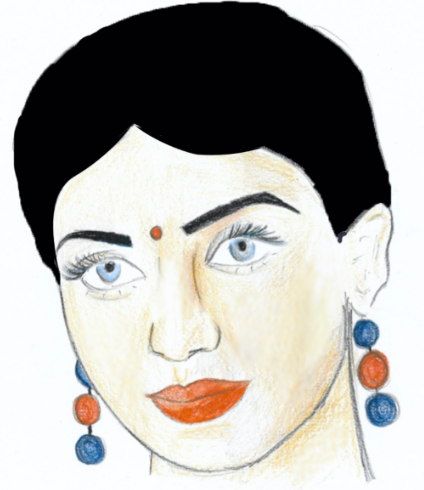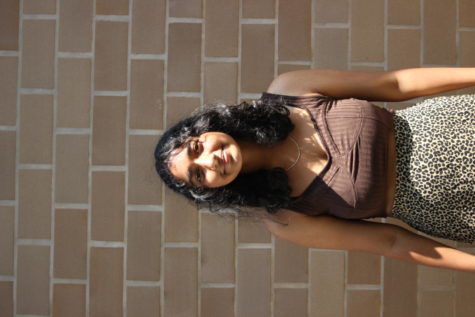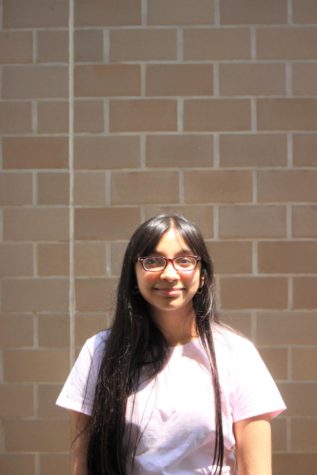Bollywood deserves a social evolution
December 15, 2019
Bollywood has been around since the beginning of the 20th century, racking up over a billion fans from all over the world. Its artistic style usually reflects romantic stories and lifestyles from all over India, more often than not in a very misogynistic manner by sexually objectifying women, labeling them as intellectually inferior. However, Bollywood’s sexist tendencies are no new feature to its audience and are still widely accepted, in spite of the rapid-fire social change occurring in India in regard to LGBTQ+ rights and female empowerment. As much as Indian society has changed over the past decades, Bollywood has not kept up.
According to an IBM dataset that analyzed approximately 4,000 Hindi movie scripts released between 1970 and 2017, female characters are usually described with surface-level adjectives such as beautiful, attractive and lovely, whereas men are usually described with more nuanced adjectives hinting at their competency, like wealthy, strong, rich, etc.
Extreme violence against women is also commonly portrayed in mainstream Bollywood movies, with examples as recent as June 2019 in the movie “Kabir Singh,” The story of a man who becomes addicted to alcohol and drugs after a familial dispute, the movie’s main character, Singh (Shahid Kapoor), exhibits disgusting and ruthless violence toward women throughout the movie, specifically a scene where he threatens, at knifepoint, to rape a woman if she refuses to have sex with him.
Their objectification isn’t always violent, though; women are sexualized in almost every Bollywood movie song scene. The heroine is consistently shown in clothes that expose most of her midriff, which is unrealistic for traditional Indian clothing, which tends to be on the more conservative side; Bollywood almost never creates a realistic female character that acts and dresses like normal women in India do. Wearing anything that even resembles the clothes shown in these movies to a family gathering or an event in India is uncommon.
Women are also constantly belittled with comparisons to physical objects. They’re often compared to Indian sweets and foods in the lyrics of songs — from being called “as sweet as a gulab jamun” (a traditional Indian sweet) to as hot as a firecracker; women’s bodies are compared to any and every object that comes to the songwriters’ minds. The same problem exists when it comes to developing a female character’s personality. It’s as if almost every writer in the industry came together, chose a set of traits and applied them for almost every heroine. They’re almost always ditzy, submissive and constantly needing to be saved by the hero from arranged marriage or physical injury. What’s more is that she acts as if she is indebted to him after he does anything, even if it’s something insignificant like helping her pick up some books. This almost always leads to her immediately falling in love with him.
This contributes to a significant portion of Bollywood’s normalization of disturbing behavior from men. Men are portrayed as temperamental, constantly fighting people and injuring anyone who stands in his way. They make repeated attempts to win the girl’s heart in a way that, if it occurred in real life, would be considered harassment. The “heroes” in these films constantly show up at the women’s workplaces and homes, following them down the streets and serenading them while they try to get away from him. To make things worse, she always ends up falling in love with the same man, who earlier in the movie consistently performed disturbing actions just to be around her.
For instance, in the classic Bollywood film “Dilwale Dulhania Le Jayenge”, Raj Malhotra, the hero (Shah Rukh Khan), constantly bothers Simran Singh, the heroine (Kajol), throughout the film. From getting uncomfortably close to her, flirting with her when she’s alone on a train, to bothering her throughout her entire trip through Europe, he is shown to be an annoying character, if not downright creepy. However, he’s still portrayed as a handsome and desirable person. There’s no denying the normalization of Malhotra’s creepy and sexist behavior throughout the movie. If characters like these are still portrayed as “ideal” men, the objectification of women in Bollywood shows no sign of stopping.
But the sexist portrayal of Indian women in these movies doesn’t stop at sexual objectification. It also extends into colorism. In the music video of a well-known Bollywood song, “Badtameez Dil”, from the movie “Yeh Jawaani Hai Deewani,” fair-skinned women are used almost as props, dancing in the background in tight dresses and drinking, usually portrayed as more “beautiful.” This encourages the practice of Eurocentric beauty ideals: that to be desirable, women must be light-skinned, which encourages products made by companies like Fair & Lovely to thrive in the beauty industry. It influences the minds of young girls who are, from an early age, told that they aren’t beautiful unless they have pale skin.
The representation of women in Bollywood movies has become far too sexual and beauty-driven, promoting unhealthy physical ideals for millions of young girls and women who view these films. It encourages unrealistic ideas that women should have light skin and a “perfect” body to be pretty and that it’s attractive to fall for a guy that doesn’t respect you. The Bollywood industry needs to take a step back, review its standards for the ideal heroine and raise them.
Bollywood isn’t necessarily retrogressive though. It’s evolving, with movies like “Dangal,” “Soni” and “Gully Boy” all portraying women as keen and intelligent people and in charge of their own future. “Dangal”’s heroine Geeta Phogat (Zaira Wasim) is a wrestler, despite the stereotype in her village that it’s only for men. She even goes on to win several awards and a gold medal for India at the Commonwealth Games. Despite these small victories of examples of complex female characters, at the end of the day, with movies like “Kabir Singh” that continue to be celebrated in mainstream Indian media, Bollywood can’t claim to be progressive just yet. Indian society is changing, and it’s time for Bollywood to catch up.





fejiro • Aug 18, 2020 at 1:50 am
Bollywood movies have always got me glued to my screen. since I was a child, I have always enjoyed the plot, the characters, and the action. I love how the hero would do anything to protect his family, honor, and innocent people. the best part about Bollywood is when they start singing and dancing. Bollywood has always intrigued me and I enjoy watching every Bollywood movie. please use this link to visit my site for articles as interesting as this one and I will really appreciate it. thank you.